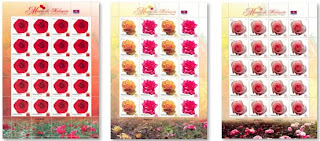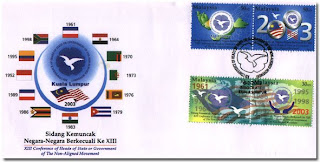 Malaysia is famous for the beauty of its flora and fauna. Having an Equatorial climate enables Malaysia to enjoy the ideal weather for the cultivation of various plants and trees. One of the plants that flourish in Malaysia is the rose tree. Roses are probably the most popular flower in the country. It's frequently sought after as a
Malaysia is famous for the beauty of its flora and fauna. Having an Equatorial climate enables Malaysia to enjoy the ideal weather for the cultivation of various plants and trees. One of the plants that flourish in Malaysia is the rose tree. Roses are probably the most popular flower in the country. It's frequently sought after as a  symbol of remembrance during special days like anniversaries, birthdays and also during festive season.
symbol of remembrance during special days like anniversaries, birthdays and also during festive season.Roses come in a variety of sizes and colors. Most of the roses found in Malaysia are fragrant though there are those which are odorless. Generally, roses need extra care in its cultivation. From its soil, fertilizer and insect repellant, all this information is vital in order to produce a beautiful and healthy blossom.
Rosa hybrida is the favorite species of rose in the country. Among popular breeds of Rosa hybrida is the hybrid team which is also the largest group of roses. They are either budded or grafted meaning they are not growing off their own rootstock. The complex hybridization process has resulted to the many colors, flower sizes and forms or roses.
 Floribundas were produced by crossing Polyantha roses with Hybird Teas. Floribunda lives in a group and is suitable to be grown either on flowerbeds or in pots. This species normally grows between 3 to 5 feet high.
Floribundas were produced by crossing Polyantha roses with Hybird Teas. Floribunda lives in a group and is suitable to be grown either on flowerbeds or in pots. This species normally grows between 3 to 5 feet high.The Floribunda featured here is a rare species. Stripes, which appear on its petals, make it more unique, Floribundas can live in most climates and has a strong resistance in combating diseases that
 frequently attacks other species of roses. As the name suggests, the blossoms of Floribunda miniature is small in size and most of its plants can be categorized as shrubs, Due to its physical condition, it is perfect for containers, window boxes or patios. Only a few of these species are fragrant. This doesn't stop them from be admired for their beauty.
frequently attacks other species of roses. As the name suggests, the blossoms of Floribunda miniature is small in size and most of its plants can be categorized as shrubs, Due to its physical condition, it is perfect for containers, window boxes or patios. Only a few of these species are fragrant. This doesn't stop them from be admired for their beauty.Rosa centifolia is one of two species of roses that can produce fragrant oil. The oil is quite pricy, as tonnes of its petals are needed just to produce a liter of oil. The oil is used by perfume and cosmetics manufacturer to obtain the rose fragrance in their products. Thorny like most species of roses, Rosa centifolia can grow until 8 feet high and are normally pink or yellow in color.
 Technical Details
Technical DetailsDate of Issue : 22-Feb-2003
Stamp Value : 30 Sen ( 2 Designs); 50 Sen Setenant ( 2 Designs )
Stamp Size : 35mm X 35mm
Sheet Content : 20 Stamps
Miniature Sheet Denomination : RM3.00
Miniature Sheet Size : 70mm X 100mm
Stamp Size in Miniature Sheet : 29.85mm X 40.8mm
Perforation : 14
Paper : Watermarked, Phosphor Coated
Printing Process : Fragrant Ink
First Day Cover Value : 30 Sen
Presentation Pack Value : RM3.00








